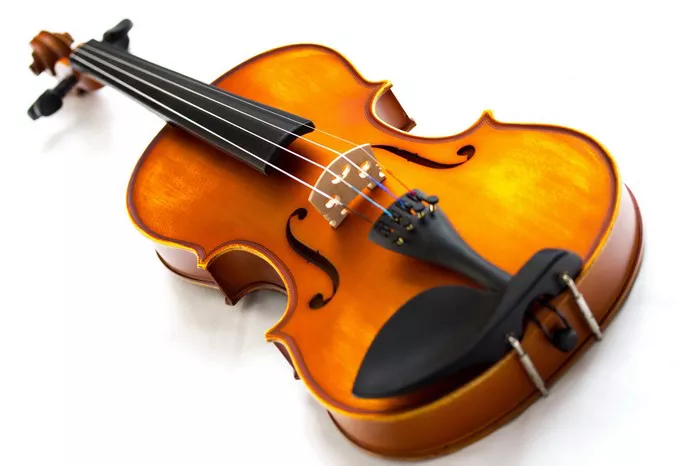The violin, a timeless instrument cherished for its soul-stirring melodies, owes much of its enchanting sound to the carefully selected woods used in its construction. Crafted with precision and artistry, violins are a harmonious marriage of various tonewoods that contribute to their distinctive timbre and resonance. In this article, we delve into the captivating world of wood used in the making of violins, exploring the unique qualities of each type and their influence on the instrument’s rich sound.
Components of a violin
A violin consists of several key components that contribute to its enchanting sound and elegant design. These components include the soundboard (top plate), back and sides, neck, fingerboard, tailpiece, bridge, chinrest, endpin, and tuning pegs. The soundboard, typically made of spruce, vibrates to produce sound, while the back and sides, commonly crafted from maple, contribute to resonance. The fingerboard, made of ebony, facilitates smooth finger movement, and the tailpiece anchors the strings. The bridge transmits string vibrations to the soundboard, and the chinrest provides player comfort. Finally, the endpin offers support, and the tuning pegs adjust string tension and pitch.
What Wood Is Violin Made Of?
Creating a violin is a labor of love and artistry. The process requires the skilled hands of luthiers who carefully select, carve, and assemble each component to achieve a harmonious instrument with superior tonal qualities. Central to this process is the choice of wood, which significantly affects the violin’s sound and character.
1. The Soundboard: Spruce
The soundboard, or top plate, is one of the most critical elements of a violin. It vibrates in response to the strings’ energy, creating the instrument’s sound. Spruce, particularly Sitka spruce and European spruce (Picea abies), is the wood of choice for most violin soundboards. Its low density and high stiffness make it ideal for generating powerful and resonant tones. The straight and even grain of spruce contributes to the evenness of the instrument’s sound, allowing the violinist to produce a wide range of expressive tones.
2. The Back, Sides, and Neck: Maple
Maple is a popular choice for the back, sides, and neck of violins due to its tonal qualities and exquisite appearance. European maple (Acer pseudoplatanus) and Balkan maple (Acer heldreichii) are widely used for their excellent acoustic properties. Maple’s density and hardness give the violin a bright and focused sound, enhancing the instrument’s projection and resonance. Additionally, the striking figure and patterns found in maple create visually stunning violins that are as captivating to the eye as they are to the ear.
3. The Fingerboard, Tailpiece, and Pegs: Ebony
Ebony, a dense and hard wood, is the preferred choice for the fingerboard, tailpiece, and pegs of violins. Its smooth surface allows for easy playability and minimal friction when moving along the fingerboard. Ebony’s durability ensures that these components can withstand the tension and pressure of the strings without wearing down over time. Additionally, the dark color of ebony provides a beautiful contrast against the lighter tones of spruce and maple, enhancing the instrument’s visual allure.
4. The Chinrest: Boxwood or Rosewood
The chinrest, placed on the lower bout of the violin, provides support for the player’s chin and enhances playing comfort. Boxwood and rosewood are commonly used for chinrests due to their durability and resistance to wear. Both woods offer a smooth surface and can be intricately carved, adding a touch of elegance to the instrument.
5. The Endpin: Boxwood or Ebony
The endpin, located at the bottom of the violin, provides stability and support while playing. It is usually made of boxwood or ebony, which offer strength and durability. The choice of wood for the endpin complements the overall aesthetics of the violin, adding a finishing touch to the instrument’s beauty.
The Influence of Wood on Sound
The combination of spruce, maple, and ebony in the construction of a violin creates a harmonious synergy of tonal qualities. The spruce soundboard resonates with a rich and balanced tone, while the maple back and sides add brightness and projection to the sound. The ebony components contribute to the violin’s clarity and articulation, ensuring that each note is distinct and expressive.
The art of violin making
The art of violin making encompasses not only technical skill but also an understanding of the unique characteristics of each wood and how it contributes to the instrument’s sound. Luthiers carefully select and work with these woods, applying their expertise to create violins that are not only sonically exceptional but also visually stunning.
Conclusion
The violin’s captivating sound is a testament to the meticulous selection of tonewoods and the artistry of luthiers who craft these instruments with love and dedication. The harmonious blend of spruce, maple, and ebony results in a symphony of tones that captivate both players and listeners alike. As the enchanting notes of the violin fill concert halls and echo through generations, the enduring beauty and timeless allure of these magnificent instruments continue to mesmerize music enthusiasts around the world.


